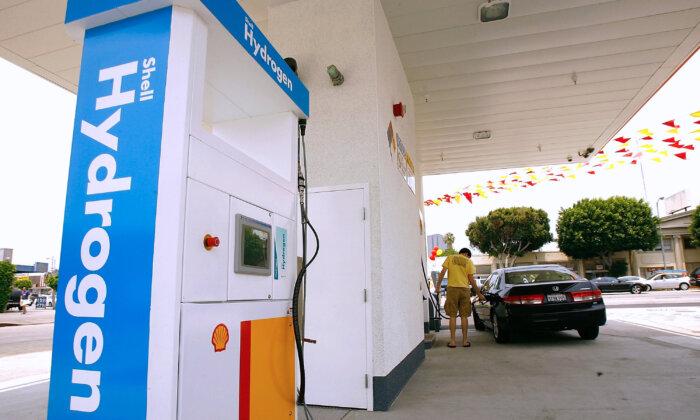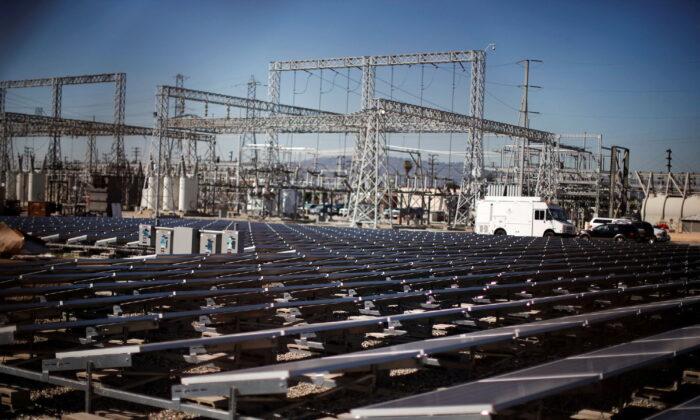Commentary
Back around 2019 when I was then-State Sen. John Moorlach’s press secretary, a guy from Toyota came over driving its Mirai hydrogen-powered car. It was impressive. We looked under the hood at its high-tech engine. The senator drove with the Toyota guy riding shotgun, and me in the back. Nice ride. Now and then I see a Mirai tooling around.
Would I own one? Sure, if you gave it to me and paid for all the taxes, licenses, and shots. For 2023, the MSRP starts at $49,500. That’s the highest price in the marque’s sedan lineup. But close to the $44,590 for ES Hybrid by Lexus, Toyota’s luxury brand.
The Mirai really is just an experimental car, burning “clean” hydrogen, as a possible future alternative to electric cars. The most valuable car company is Tesla, with a market capitalization of $761 billion. But its fortunes depend on erratic CEO Elon Musk. Second is Toyota at $247 billion, by far the best of the traditional car companies. So it has money to throw around on experiments. Its hybrid Prius experiment, introduced in 1997, certainly has paid off big time by giving it a leap on other companies.
The Mirai also depends on an erratic source, money from the California taxpayers. For now, the gravy train is continuing. On Sept. 14, the Legislature passed Assembly Bill 126, by Assemblywoman Eloise Gómez Reyes (D-San Bernardino). It funded the Clean Transportation Program. A deal was worked out with Gov. Gavin Newsom, who is expected to sign it.
Among other things, the bill’s language says it would spend “no less than 15 percent of the moneys appropriated by the Legislature from the Alternative and Renewable Fuel and Vehicle Technology Fund ... only until July 1, 2030.” The estimated total cost would be $106 million. It would go to fund the scarce hydrogen-fuel filling stations. That’s on top of the $202 million already spent on the fueling stations. Total: $308 million.
Calmatters noted only about 12,000 hydrogen vehicles run around California, “about 1% of the 1.1 million zero-emission vehicles on the road today.” And, I would add, just 0.034 percent of the DMV’s tally for 2023 of the 35 million fee-paid vehicles registered here.
They’re rich people’s toys.
Public Private Partnerships
That $308 million, grabbed from all the DMV fees paid by the rest of us, certainly could fill a lot of potholes. But the Green Dream must remain alive!This program was one of the environmental projects I’ve been writing about in the Epoch Times that were started by Gov. Arnold Schwarzenegger. All have been expensive and disastrous for the state—although providing plenty of opportunities for posturing by him.
In 2004 at U.C. Davis, he unveiled his California Hydrogen Highways Network. According to Renewable Energy World at the time, he signed “an executive order creating a public and private partnership to build a Hydrogen Highway in California by 2010. The governor drove a hydrogen-powered fuel cell car to the event and refueled it at UC Davis’ new hydrogen fueling station—the first publicly accessible station on California’s Hydrogen Highway. He is the first member of the general public to use it.” And still one of the few.

Actor and former governor of California Arnold Schwarzenegger poses with the 2016 Toyota Mirai pace car, a hydrogen fuel-cell electric vehicle, on pit road prior to the NASCAR Sprint Cup Series Toyota/Save Mart 350 at Sonoma Raceway in Sonoma, Calif., on June 28, 2015. Robert Laberge/Getty Images
At the time he enthused, “This is the future of California and the future of our environmental protection. This starts a new era for clean California transportation.”
Legislative Unreality
The real problem, according to State Sen. Josh Newman (D-Fullerton), is not the lack of enthusiasm by the driving public, but, “The reason it’s behind is because we haven’t made the appropriate investments.”That is, we need more of the “public-private partnerships” Schwarzenegger always was prattling about. In 2009 he published a column co-written with then-New York Gov. David A. Paterson urging: “If we are to finance and build a world-class infrastructure for America, we must seek new solutions. And a promising solution is at hand: public-private partnerships.”
Not coincidentally, it is those two states which have lost the most population since their column appeared. The 2023 edition of the Laffer-ALEC “Rich States, Poor States” report tallied Cumulative Domestic Migration (those leaving for other states, minus those coming in) between the years 2012 and 2021. For California, it was an exodus of 1,551,510; but for New York it was worse, with 1,778,252 leaving.
The problem is these projects easily devolve into crony capitalism—the politically connected businesses get the contracts, the rest of us get the bill. The efficiencies of the private sector supposedly are used to reduce the cost of a public project. But the real effect is to increase the size of government control over our lives.
Economist Chris Brown for the Mises Institute called PPPs “the back door to socialism. ... When government is able to partner with a private company and grant access to land, labor, or capital that would not have occurred absent government intervention, everyone’s property is exposed to the risk of government takeover. A private company may not be able to construct a highway through the private property of others. Government, through powers of eminent domain, is able to seize private property from individuals and construct nearly anything it desires. In other words, government is able to not only extract money from private individuals (taxes) but also to take away their (more tangible) private property.”
Mr. Newman, by the way, was recalled in 2018 after he provided the crucial vote for the unneeded 2017 gas tax increase of $5 billion a year, which contributed to making the state’s gas prices the highest in America. Inexplicably, in 2020 voters returned him to the Senate.

A Hyundai Motor's Nexo hydrogen car is fueled at a hydrogen station in Seoul, South Korea, on Aug. 13, 2019. Kim Hong-ji/Reuters
Conclusion: The Irresponsibility Continues
The $106 million for the hydrogen stations shows the irresponsibility continues in the Legislature and the rest of the state government. The state this year ran up a $31.5 billion budget deficit. They should be cutting every bit of waste. Instead, they just keep wasting. It’s the taxpayers’ money, not theirs, so why should the legislators and the governor care?Any responsible family falling into budget problems cuts all the waste, even the seemingly little stuff: the Netflix subscription, the trip to McDonald’s, the new iPhone—all of it goes. Not so the California government. Every expensive indulgence is maintained. No wonder the state has become a global watchword for misgovernance.
Views expressed in this article are opinions of the author and do not necessarily reflect the views of The Epoch Times.







